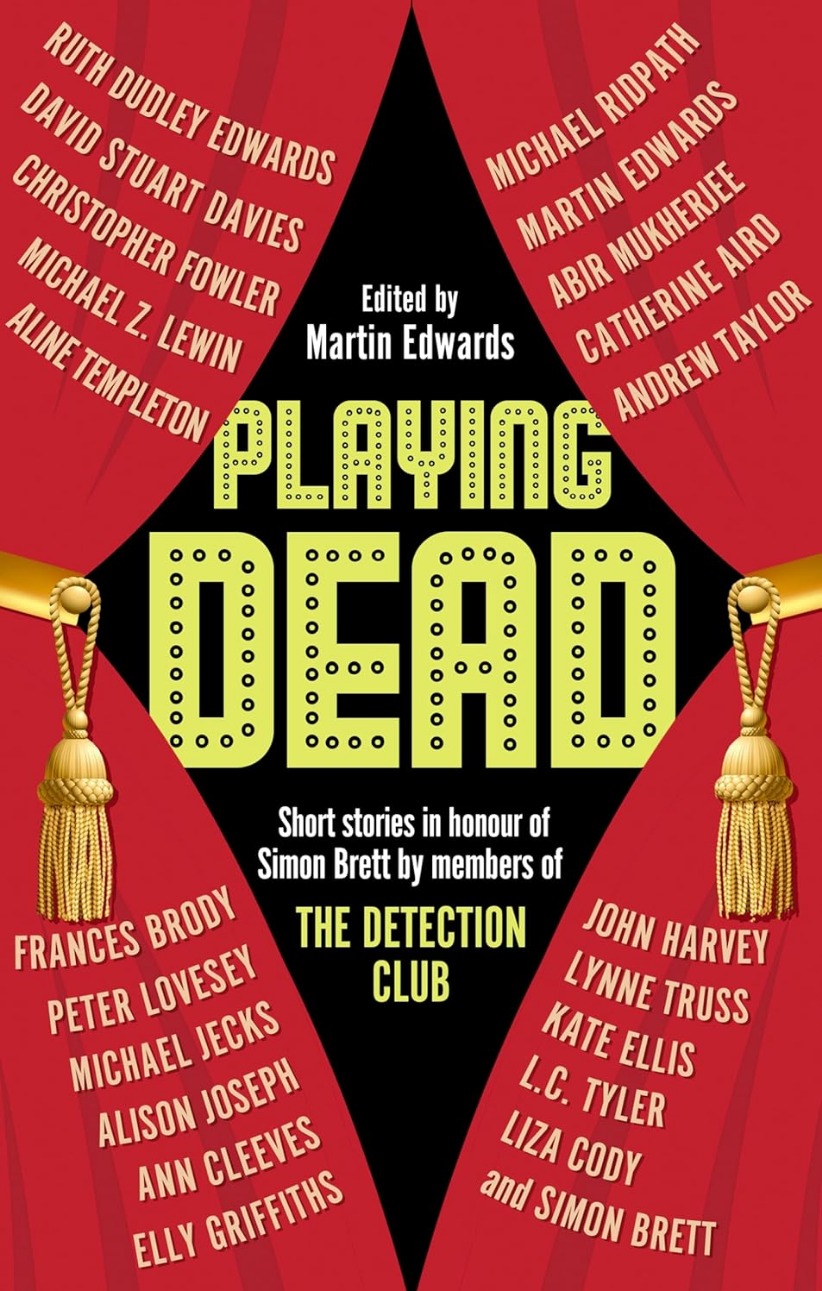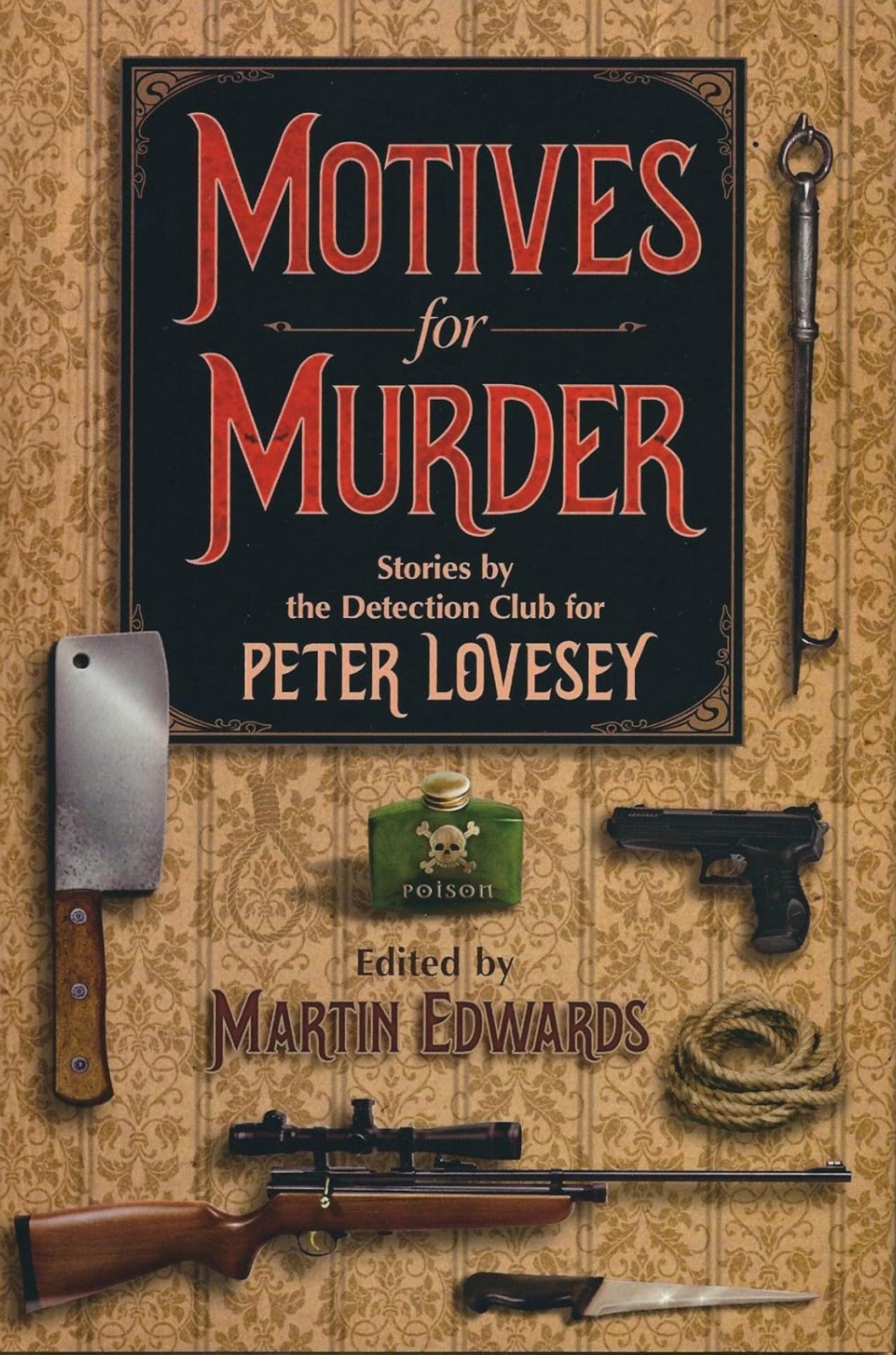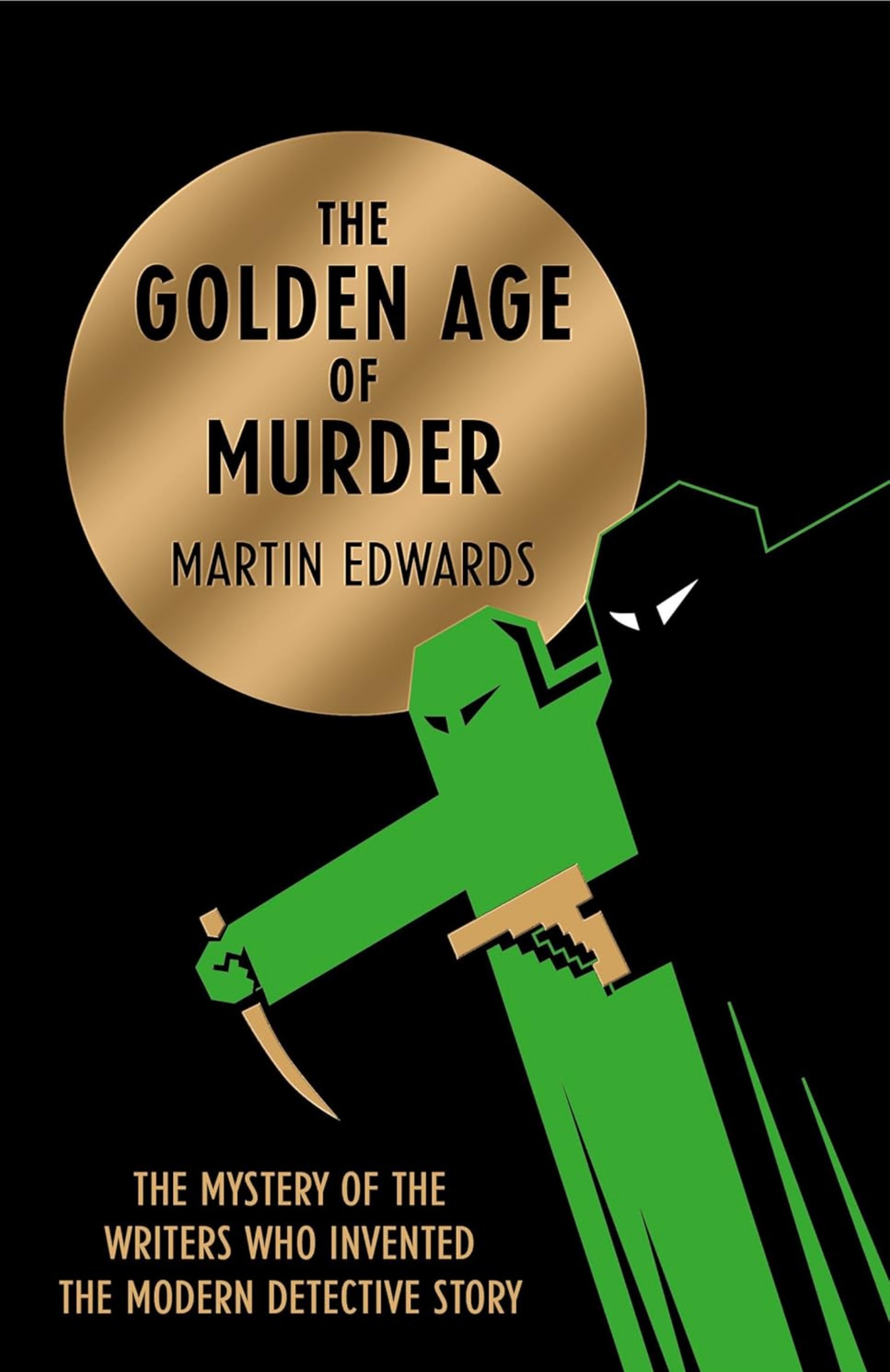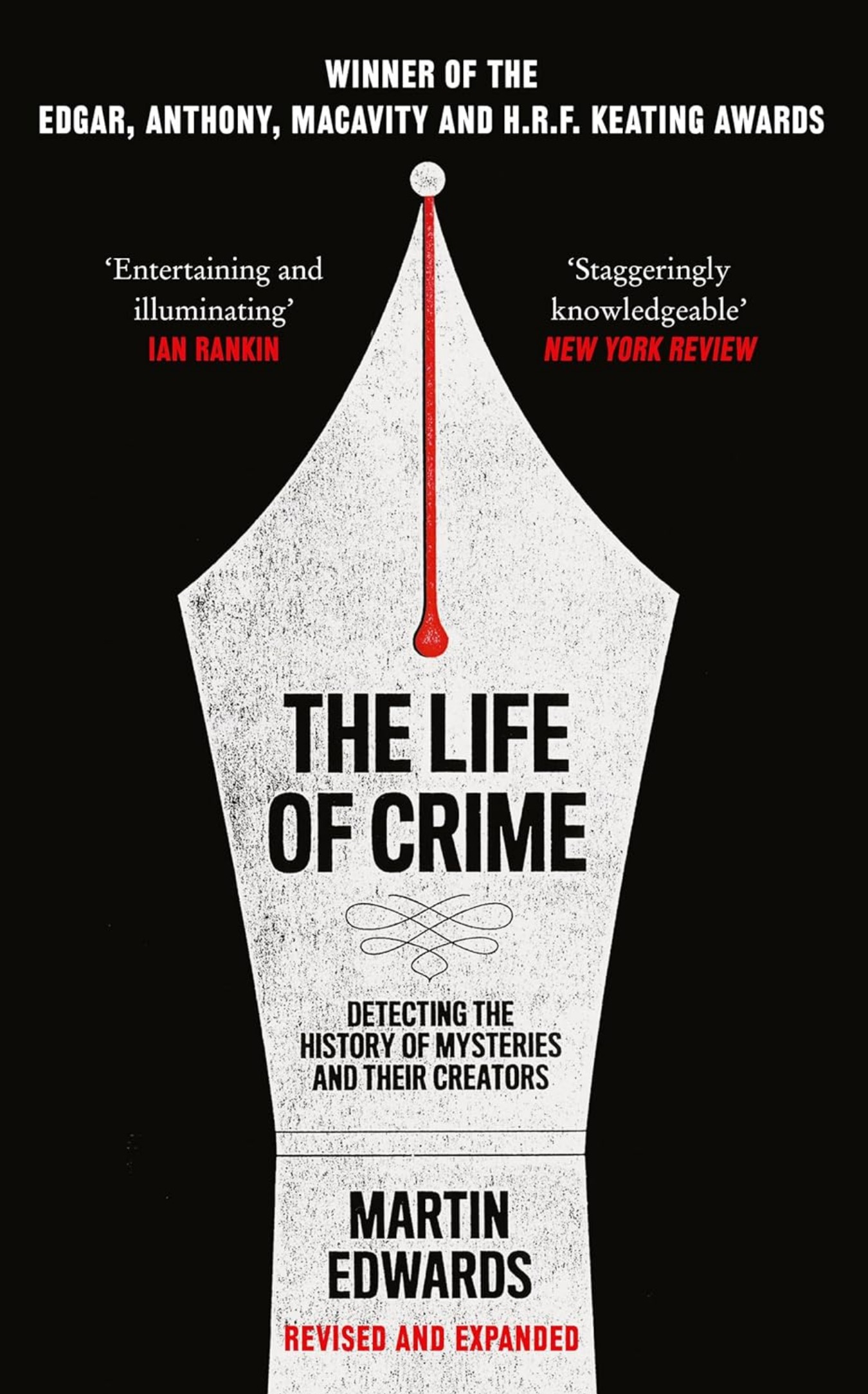When a group of the best current British mystery writers produces a tribute anthology in honor of their club’s former president, you can expect the book to contain some excellent stories. That’s the case with Playing Dead, which contains 22 stories written by members of the famed Detection Club. The book, edited by current club president Martin Edwards, is a tribute to his predecessor, Simon Brett (who contributed one story). Unfortunately, despite the authors’ pedigree, about one-third of the tales are routine or outright duds. As a result, Playing Dead is a solid read, but not as good as it should be.
The Detection Club is an exclusive club comprising British mystery writers who were invited by the existing membership. Initially, the club was dedicated to the tradition of Fair Play in mystery writing, as set out in some informal rules. The club’s lineage dates from 1930, when it was founded by Anthony Berkeley. Its first president was G. K. Chesterton, and other presidents included Dorothy Sayers and Agatha Christie. Simon Brett served as president from 2000 to 2015. During Brett’s tenure, the club published a similar tribute in honor of his predecessor, H. R. F. Keating, on his 80th birthday. Martin Edwards continues that tradition with Playing Dead as
Brett approaches 80. All stories in this collection are new, and many authors pay tribute to Brett’s own writing background in some way.
The stories in Playing Dead follow no particular order by author or theme, and I think editor Edwards front-loaded the collection with some of the best. The book gets off to a great start with “Crimes Ancient and Modern” by L. C. Tyler. A husband-and-wife mystery writing team finds both their careers and marriage falling apart. In desperation, they hatch elaborate schemes to murder each other. The manner of their ultimate demise (no spoiler since the author reveals this detail in the story’s first sentence) is a good twist. A more serious tale, “Dead Ground” by Andrew Taylor, follows. Readers will immediately note this story’s similarity to The Body (filmed as Stand by Me) by Stephen King. Four teenagers regularly hang out in a wooded area near their homes. One day, they find a dead body in the woods. Unlike King’s teens, they don’t report the discovery, and the body isn’t uncovered by anyone else until 20 years later. The ending will surprise most readers, but in the best Detection Club Fair Play tradition, the author provides all the necessary clues.
“Just a Minute” by Peter Lovesey (who sadly died since contributing this story) pays homage to Simon Brett’s history as a radio producer. The story takes its title from a long-running British game show of the same name. A convicted serial killer agrees to reveal the location of his victims’ bodies if the prison stages a performance of the show with him as a contestant. (Imagine a Jeopardy episode with Ted Bundy playing.) The story probably resonates better with readers familiar with the radio show, but I still enjoyed it. “Bells and Whistles” by Lynn Truss is also set against the backdrop of a popular radio show, this time a fictional 1950s detective series. Unfortunately, it’s one of the weakest stories in the collection. The author plays the scenario for laughs, but the jokes don’t connect. Instead, the story rambles far too long.
A popular theme in Simon Brett’s mysteries is a mysterious death that occurs in connection with a theater production. Several stories in Playing Dead involve variations on that premise. Brett himself contributes a story featuring his favorite character, third-rate actor Charles Paris. In the anthology’s best story, “Cast, in Order of Reappearance,” Paris is cast in a regional theater production featuring an obnoxious “National Treasure” actor in the lead role. Humor abounds here, as Brett includes some offbeat references to cast members, including Paris’s own role as “Suspect Whose Work As A Doctor Gave Him Access To The Medication An Overdose Of Which Caused The First Murder Victim To Die.” He also reveals some idiosyncrasies of local theater, such as the “Repeated Cue,” where an actor receives the same line as a cue multiple times during the show and mixes up their lines, reciting the wrong response at the wrong time, thus causing a disruption in the play’s action. (This proves a significant plot point when a cast member dies soon after.) Brett also contributes a short essay describing his experiences with the Detection Club and the acquaintances he made over the years. That essay is as entertaining as many of the collection’s stories.
Although the cast in Brett’s story is staging a revival of a hoary mystery play, the tale itself is very much a product of 2025, with some #MeToo references. Several other stories in Playing Dead also incorporate modern-day themes. In “Silver Fox” by Michael Ridpath, a woman falls prey to an internet scammer who romances her online and persuades her to send him a substantial sum. However, the woman’s husband identifies the scammer from his picture, and the couple tracks him to his home in Iceland, seeking revenge. The story has some entertaining twists along the way. Ruth Dudley Edwards’ “Publish and Be Damned” is about a writer whose relating an “inappropriate “joke at a literary luncheon arouses the ire of the publisher’s “sensitivity” personnel. The publisher then drops the writer, who can’t find a new publisher. Rather than give up on his career, the writer gets his revenge in the best way. On a more serious note, Abir Mukherjee’s “Full Circle” is the story of an older woman who is clearly getting her affairs in order to prepare for… The reason for her actions becomes clear in the story’s final few pages, which pack an emotional wallop.
Unfortunately, not all the stories in Playing Dead live up to Brett and Edwards’ highest standards. More unfortunately, some of them are among the anthology’s longest tales. “Murder at Mousecomb” also involves the death of an actress in a touring theater production. The story is narrated by the actress’ understudy, and the timeline shifts repeatedly and confusingly from the present day to a recap of the understudy’s entire career. “Blood on Ice” by Frances Brody tells the life story of a man whose descent to petty crime and prison costs him everything, including his marriage. The plot is very predictable and more boring than depressing or illuminating. Two stories involve well-known historical figures, Wilkie Collins and Christopher Marlowe. Only readers very familiar with the pair will find these tales entertaining. Another lengthy story, “Criss-Cross” by John Harvey, reads like the script of a routine episode of a TV police drama like Law and Order: SVU.
I really enjoyed most of the contributions to Playing Dead. The authors showed off their talent and often paid homage to Simon Brett in their choices of subject and setting. (Charles Paris even makes a cameo appearance in one story.) However, I also felt the anthology had too many stories that weren’t worthy of selection. The members of the Detection Club represent the cream of the crop in British mystery fiction, and some stories fell considerably below that standard. Worse, they took up an inordinate percentage of the book’s overall content. My four-star rating is a solid recommendation for the anthology coupled with a regret that it wasn’t all it should have been.
NOTE: The publisher graciously provided me with a copy of this book through NetGalley. However, the decision to review the book and the contents of this review are entirely my own.
In this clip, editor Martin Edwards and mystery writer Nicola Upson discuss the Golden Age of Crime at the Buxton Int. Festival:
Read other reviews of Playing Dead :
Martin Edwards is a multiple-award-winning crime novelist, critic, historian, and editor. He has received the CWA Diamond Dagger, the highest honor in British crime writing, given for the sustained excellence of his contribution to the genre. His recent novels include Gallows Court and Sepulchre Street, which were each nominated for the CWA Historical Dagger and shortlisted for the eDunnit award for best crime novel. British librarians awarded him the CWA Dagger in the Library in 2018 in recognition of his body of work. His eighth and latest Lake District Mystery is The Crooked Shore and earlier books in the series include The Coffin Trail, short-listed for the Theakston's prize for best British crime novel. In addition, Edwards has won lifetime achievement awards for his short fiction (the Golden Derringer), his non-fiction (the Poirot award) and his scholarship (the George N. Dove award). He has published many short stories, including the ebooks The New Mysteries of Sherlock Holmes. 'The Bookbinder's Apprentice' won the CWA Short Story Dagger.
Edwards is also an acclaimed crime fiction critic and series consultant to the British Library's Crime Classics. His ground-breaking study of the genre between the wars, The Golden Age of Murder won the Edgar, Agatha, H.R.F. Keating and Macavity awards. The Story of Classic Crime in 100 Books won the Macavity and was nominated for four other awards, while Howdunit, a masterclass in crime writing by members of the Detection Club, won the H.R.F. Keating prize. His ground-breaking history of the genre, The Life of Crime, won the Edgar, H.R.F. Keating, Macavity, and Anthony awards.
In addition, Edwards has edited over 50 anthologies and published diverse non-fiction books, including a study of homicide investigation, Urge to Kill. An expert on crime fiction history, he is the archivist of both the Crime Writers' Association and the Detection Club. He was elected eighth President of the Detection Club in 2015, spent two years as Chair of the CWA, and posts regularly to his blog, "Do You Write Under Your Own Name?"
Header Photo: "Riot Radio" by Arielle Calderon / Flickr / CC By / Cropped
Silver Screen Video Banner Photos: pedrojperez / Morguefile; wintersixfour / Morguefile
Join Button: "Film Element" by Stockphotosforfree
Twitter Icon: "Twitter Icon" by Freepik
Facebook Icon: "Facebook Icon" by Freepik
LinkedIn Icon: "LinkedIn Icon" by Fathema Khanom / Freepik
Goodreads Icon: "Letter G Icon" by arnikahossain / Freepik
Certain images on this site appear courtesy of Amazon.com and other sponsors of Silver Screen Videos for the purpose of advertising products on those sites. Silver Screen Videos earns commissions from purchases on those sites.
© 2025 Steven R. Silver. All rights reserved.







